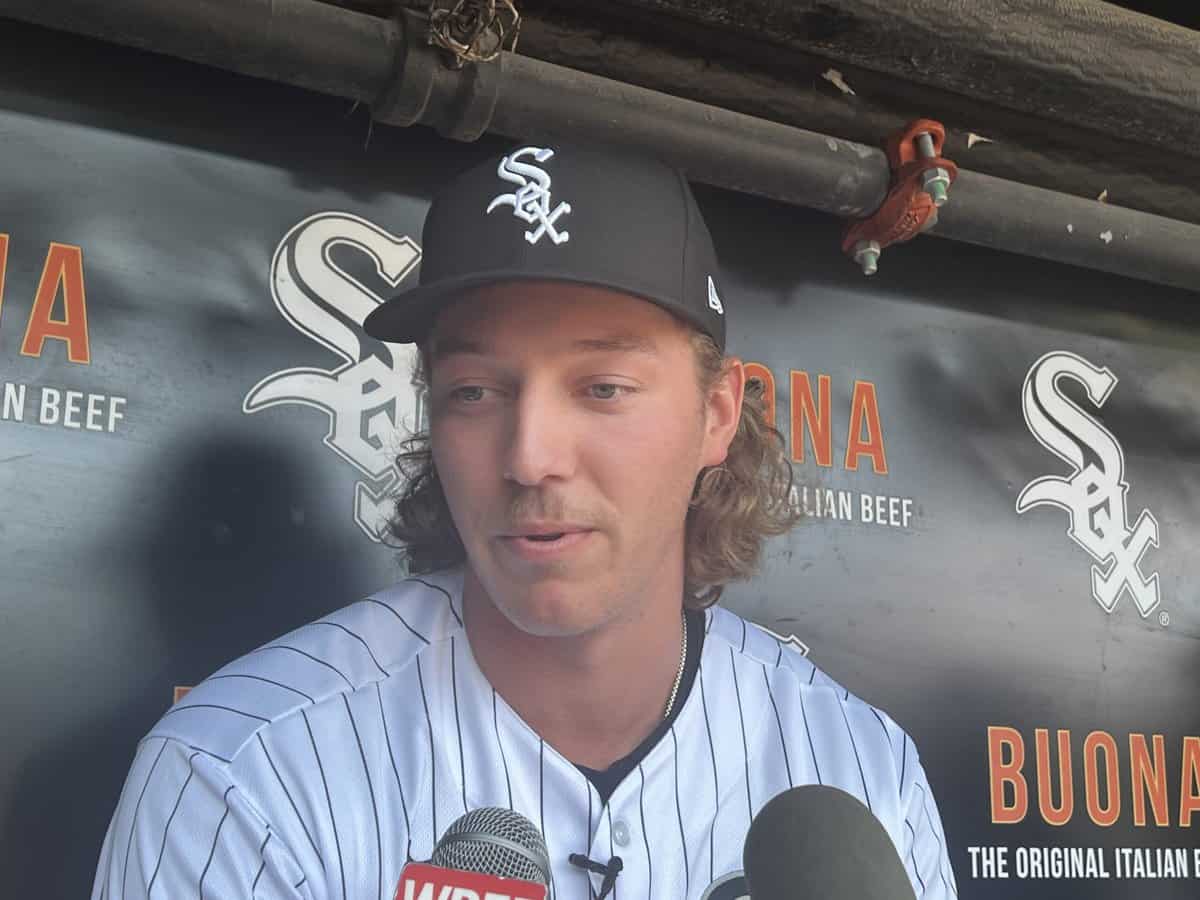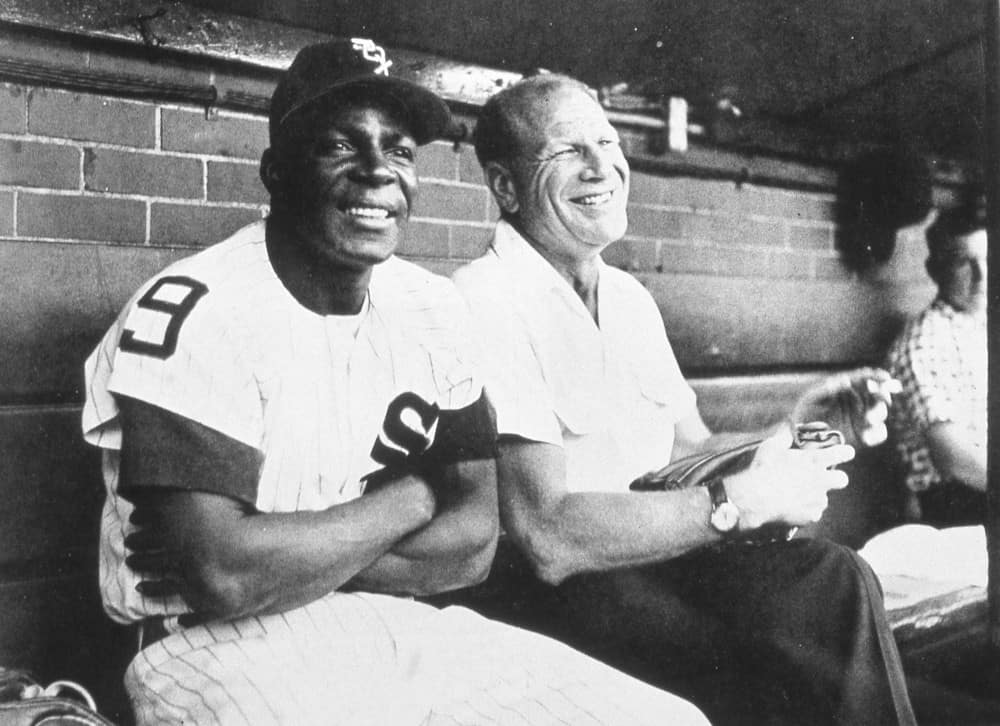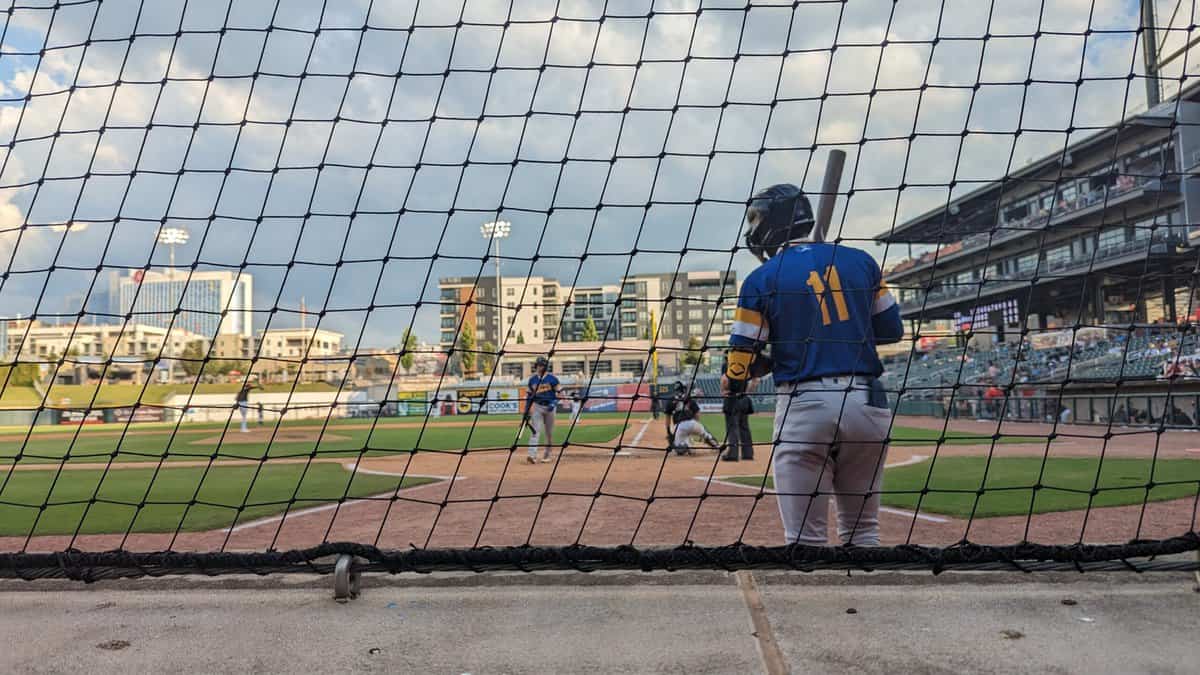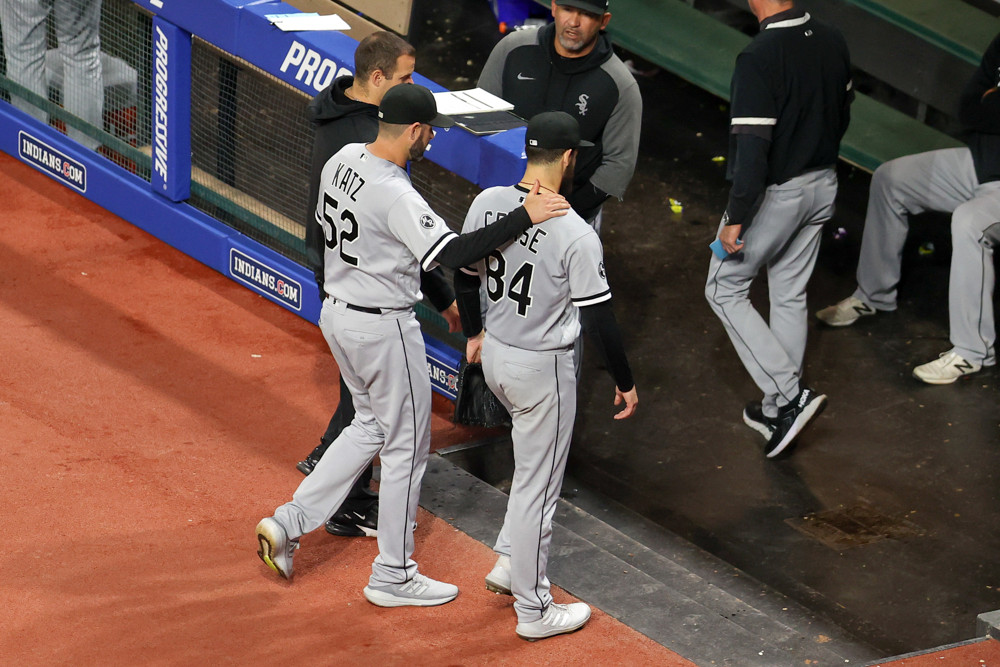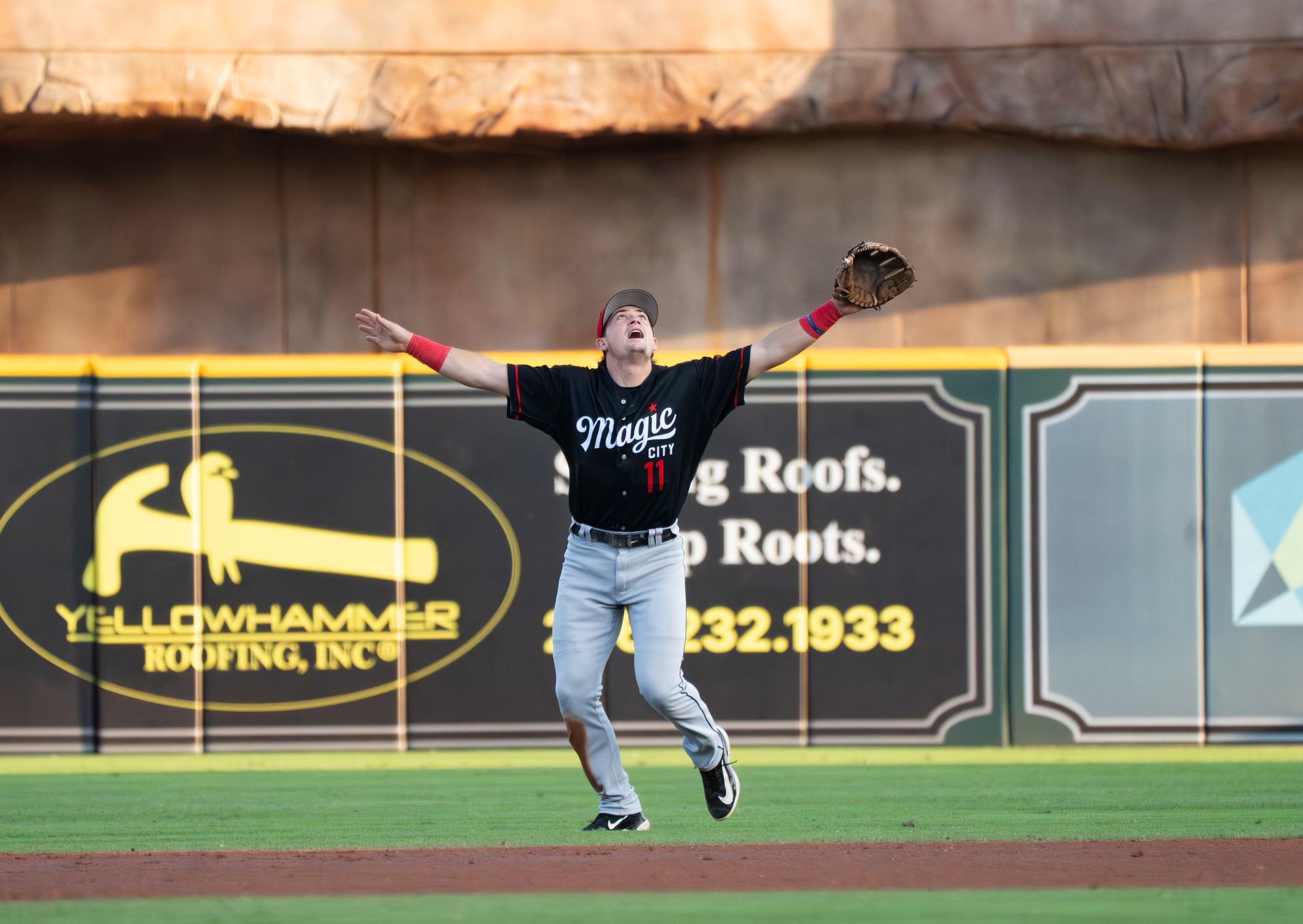It's professional baseball in 2025, and the White Sox have a lot of their future staked in two left-handers whose health could swing their chances of opening a contention window in the foreseeable future, so an interview with pitching coordinator Matt Zaleski centers around innings allotments.
After both -- albeit in very different ways -- pitched once per week and accumulated between 88-92 innings in 2024, top prospect arms Noah Schultz and Hagen Smith will be tasked with transitioning to a five-day schedule and logging around 110 innings of work in 2025. For Schultz, it's more of a specific target in mind as the White Sox gradually push up his innings total, and pepper all discussion of the 21-year-old left-hander with reminders that he won't be rushed.
"The next biggest step is understanding what he needs to do on those five-day rotations where the recovery is a little different, you're going to take your bullpen a little lighter, navigating through that, and then with him getting the innings that he got last year, probably won't push it past 110 if we get there," said Zaleski, who suggested Schultz's outings will build in length over the course of the season. "We've got to take it cautious early, so we can make sure that he gets through the finish line again this year."
For Smith, 110 innings is more of a rough projection in light of him also transitioning to a five-day schedule, and is part of larger response to him being fatigued at the end of his draft year, with the Sox already deciding to rest him through fall instructional league. In both cases, it limits the room in their seasons for end-of-year cameos in Chicago, which farm director Paul Janish acknowledged is not far off from purely an ability perspective.
There are development goals for each Smith and Schultz beyond simply accumulating innings. Smith is so lauded for his ability to supinate for his signature slider that Zaleski has been against making him practice a changeup too much, lest they risk throwing off his typical wrist orientation and part of what makes him special. The way a Carlos Rodón comparison is most apt for Smith is that the White Sox think a mix of breaking balls at different speeds is as likely, if not more likely, to round out his arsenal than a straight changeup. So whether a cutter or curveball or both emerges from Smith in 2025 is something to watch. Schultz has already flashed an early aptitude for swapping between two different types of fastballs, which Zaleski feels will hold off hitters from getting on plane with either one. On top of building out that mix more, this is a crucial season for accumulating data on how Schultz's mechanics hold up over the final third of full-length outings and his recovery between starts.
"Having biomechanics, having release height, having all the data is just hugely helpful," Zaleski said. "Pair it with some of the stuff sport science does with outputs and jumps and how long it takes him to recover. If his outputs and jumps are good the day after he throws, then he generally can recover real quick. If it's something where it's a more stagnant jump, then we know we need to take more time. But it's taking all the information and we can actually break it down and see at what pitch number they start to deteriorate or where the mechanics start to fall apart."
In a similar vein, right-hander Grant Taylor's season goals are one notch below this duo after a lat strain limited him to 27 innings in his first full year of professional baseball. Zaleski also wants the LSU product to get acclimated to a five-day schedule this year, but is targeting the 85-90 innings range that Schultz reached in 2024. Because the Sox would rather have Taylor sprinting through the finish than shutdown by August, his outings will be shorter to start and grow in length over time. Taylor has thrown fewer than 100 innings total over the last three years, so the Sox believe the primary remedy to the command struggles that marked his Arizona Fall League performance (seven walks to 46 hitters) is more time on the mound, but Zaleski noted excessive tilt in his shoulder orientation as the key item to address.
Last year's second round pick, funky low-slot lefty Blake Larson, will be on a schedule that most looks like Schultz's 2023 season. He will be pitching once per week after logging fewer than 50 innings in his last year of high school, but Zaleski sounded hopeful that Larson will be able to forge his way to Kannapolis in 2025 if all goes well.
Juan Carela didn't dominate discussion of the best White Sox prospect arms in 2024, but like Mason Adams, was someone the organization thought highly enough to bring to Chicago mid-season last year to pitch in front of front office brass. His recent 40-man placement obviously is a nod to how the team feels about Carela, and grouping him and Adams together is to underscore that both have kitchen-sink, breaking ball-heavy profiles. Neither righty spends much time outside the low-90s for their fastballs, and mitigate that element by showing a wide blend (four-seam, two-seam, cutter) of shapes with their velocity and leaning heavily on spin. For Carela, it's a sweeper that he throws the plurality of the time, and is working on commanding a backdoor version of it to help against left-handed hitters. Adams' slider is also his standout offering, but he also makes heavy use of a curve to keep hitters off the velocity of his best weapon.
"His slider is real special; it's unique, it's hard and it has a ton of movement," Zaleski said of Adams, whom he feels wasn't quite himself after a back injury addled his arrival to Triple-A last year. "He's going to lean on his breaking balls and locate his fastball to get outs."
Nick Nastrini is going to get a fresh chance to keep starting this spring despite finishing 2024 in Charlotte's bullpen. Zaleski is confident that fatigue was to blame for most of Ky Bush's control issues in the majors last August and September, and Jairo Iriarte is reporting to Arizona early to continue working on restoring the posture in his delivery and shape of his four-seamer that made his 2023 performance more appealing to the White Sox. But since Zaleski directs more of his focus to non-40 man prospect arms, those are topics to flesh out more in an interview with Ethan Katz that will run in the coming days.
Zaleski said watching 21-year-old right-hander Aldrin Batista carve up hitters in High-A Winston-Salem at the end of the year (29 strikeouts, six walks in 26 innings) reminded him of a young Brayan Bello, at least in terms of aggressive mentality. Acquired from the Dodgers in 2023 for IFA pool room, Batista has touched 95 mph with a sinker that he pounds on the hands of hitters to set up a slider than runs across the plate horizontally. Former third-round pick Seth Keener has a presently plus slider that allowed him to dominate out of the bullpen at Wake Forest, but Zaleski said an arm slot issue with his changeup was addressed in instructional league, lending hope to him sticking as a starter.
"He dropped his slot really bad on his changeup and always ended up pushing it and not feeling normal with it, so that's why he didn't use it a whole lot in-season," Zaleski said of Keener, who also ended the year at High-A. "Made the adjustment of getting his slot to where his slider slot is and the changeup became kind of gross. I'm intrigued to see where that's at after an offseason."
Peyton Pallette is clearly the best candidate for someone to bubble up from the minors and carve out a role in the major league bullpen in 2025, since hitters fared .145/.220/.184 against him after he switched to relief. To pick up on the topic of monitoring how Schultz's biomechanics look as his starts lengthen out past four innings, or even continuing the thread of how Jonathan Cannon is working to maintain his arm slot, Pallette's successful transition was triggered by how he scored in such measures.
"Very good command, very good stuff," Zaleski said. "It was right around pitch 40-to-50, you'd see almost a dip in it and it just happened over and over again. Talking with our sport science team, Peyton did a great job of recovering really quick and maintaining his jumps the day after. So it all led for him to be a reliever, with the stuff he showed the first time through the lineup as a starter, which he generally did really well on. The second time through, hitters start seeing you, they start picking up stuff and that's pretty much it. We just capped him at two innings and let him go and have fun in the bullpen. It was awesome to see, and he was fired up about it."
And because Pallette's first half work in the rotation means he got up to 88 innings of work in 2024, the White Sox feel he's pretty well situated to finish out a major league campaign if/when called upon. After pitching two innings at a time with two days off afterward for much of his final weeks with the Barons, Pallette's early season work will be accumulating experience with the more irregular usage patterns that the majors will demand of him.
Asked for potential 2025 sleepers, Zaleski mentioned two more arms who were pitching alongside Pallette at Double-A Birmingham by the end of last year. Riley Gowens, one of the last men standing of the Aaron Bummer trade, was old for the level in striking out 60 batters in 51⅓ innings with the Barons, but Zaleski said he hides the ball exceptionally well behind his six-foot-four frame in his delivery. Zach Franklin is a year older, but bullies hitters via a mid-90s fastball with almost 19 inches of inverted vertical break, and struck out 17 of the 36 batters he faced at Birmingham.
